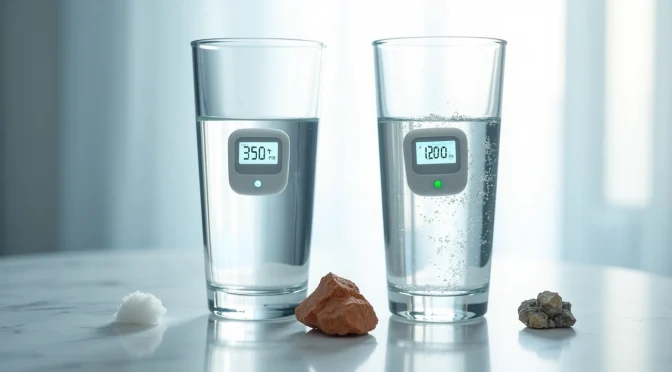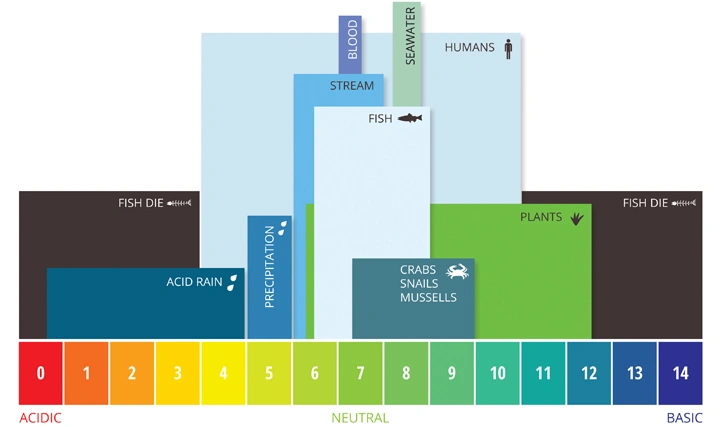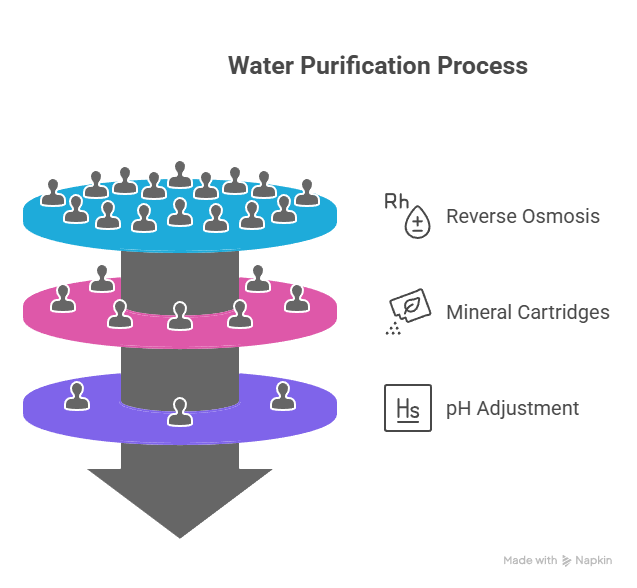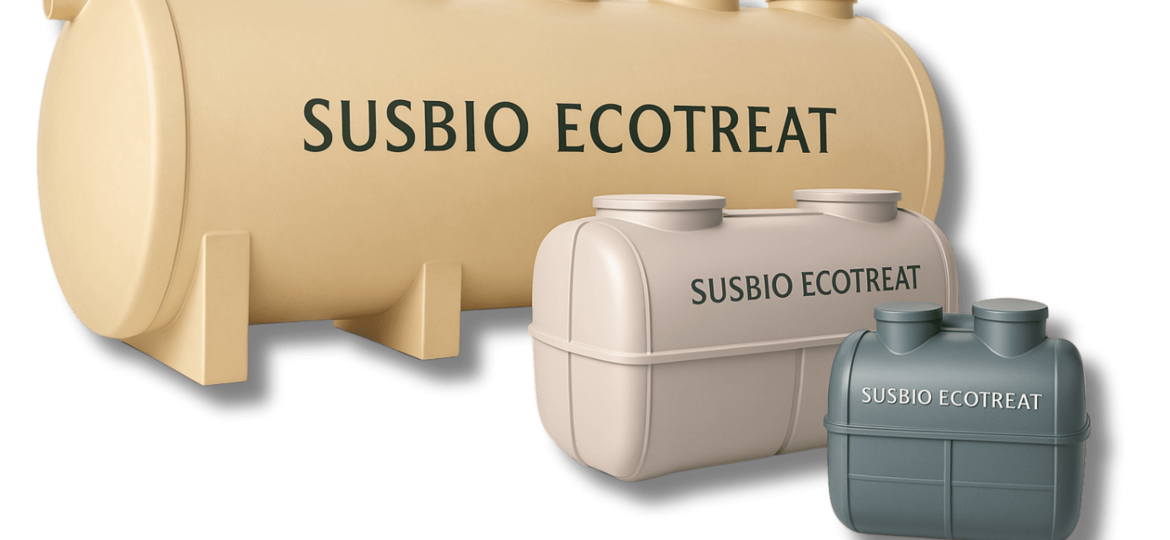The difference between seawater and drinking water’s TDS levels might surprise you. Seawater can reach TDS levels up to 35,000, while good drinking water only needs 150 to 250. A pH and TDS meter helps us check water quality and ensures we drink safe water daily.
TDS (total dissolved solids) shows how many substances are dissolved in water. Scientists measure it in parts per million (ppm) or mg/L. Safe drinking water should have TDS between 150-250, though city water often ranges from 100 to 500. The pH scale tells us if water is acidic or alkaline, ranging from 0 to 14, with 7 marking neutral. The World Health Organization says safe drinking water should have a pH between 6.5 and 8. The US Environmental Protection Agency treats both as secondary contaminants and allows TDS up to 500 mg/L with pH between 6.5 and 8.5.
This piece will show you what these numbers mean, how they affect your health, and simple ways to check and treat your home’s water quality.
Understanding TDS in Water

A glass of water might look crystal clear, but a complex mixture of dissolved substances lies beneath its surface. These invisible particles make upto Total Dissolved Solids (TDS) in water. TDS is a vital indicator of water quality that affects everything from taste to health.
TDS full form and water TDS meaning
Total Dissolved Solids (TDS) represents the combined concentration of all organic and inorganic substances dissolved in water. These substances exist in molecular, ionized, or micro-granular suspended form that your eyes cannot see. TDS levels cover several components:
- Inorganic salts: Calcium, magnesium, potassium, sodium, carbonates, chlorides, sulfates, and nitrates
- Organic matter: Hemic acids, tannins, and small amounts of organic compounds
- Metals and minerals: Iron, manganese, and sometimes heavy metals like lead and arsenic
TDS components dissolve completely, unlike sediment or suspended particles that make water cloudy. Picture sugar that dissolves in water rather than floating around – that’s how TDS works.
Common sources of TDS in groundwater and surface water
Natural and human activities add TDS to water. The origins explain why TDS levels vary substantially based on location and water source.
Natural sources:
- Mineral springs where water flows through rocks rich in salt content
- Rocks and soils break down, particularly limestone and chalk containing calcium and magnesium
- Prairie provinces’ groundwater naturally contains high mineral content
- Coastal areas experience sea water intrusion that adds sodium and other ionic compounds
Human activity sources:
- Agricultural runoff with fertilizers, pesticides, and herbicides
- Urban runoff from roads, yards, and other impervious surfaces
- Industrial effluents and sewage treatment discharges
- Winter road de-icing salts
- Lead and copper leach from old plumbing systems
- Construction and deforestation cause soil erosion
Regional geology, land use patterns, and nearby human activities determine TDS composition. Areas with heavy farming often show higher nitrate levels. Regions near mining operations might have more metals in their water supply.
TDS water level ranges in municipal and borewell supply
TDS water levels are different based on the source. Groundwater typically contains higher concentrations than surface water because it stays in contact with mineral-bearing rocks longer.
Municipal water supply usually has TDS levels between 100 to 500 mg/L. These systems often use surface water sources and treatment processes that remove some dissolved solids.
Borewell water shows much higher TDS levels, usually around 500 ppm or higher, ranging from 220 to 1050 mg/L. Extended contact with underground minerals causes these higher concentrations.
Water quality categories based on TDS concentration:
- Fresh water: TDS less than 1,000 ppm
- Brackish water: TDS between 1,000 to 10,000 ppm
- Saline water: TDS between 10,000 to 35,000 ppm
- Hypersaline: TDS greater than 35,000 ppm
United States drinking water standards set 500 mg/L as the secondary water quality standard for palatability. The Bureau of Indian Standards allows up to 2,000 mg/L when no alternative source exists, though 500 mg/L remains the acceptable limit.
Water palatability relates directly to TDS levels:
- Less than 300 mg/L: Excellent taste
- 300-600 mg/L: Good taste
- 600-900 mg/L: Fair taste
- 900-1,200 mg/L: Poor taste
- Above 1,200 mg/L: Generally unacceptable
TDS measurement helps determine the right water treatment methods. Home testing becomes easier with specific conductivity meters and TDS meters that monitor water quality before consumption.
How TDS Affects Water Quality and Health
TDS levels affect more than just the tiny particles floating in your glass of water. Your water’s TDS reading changes everything from how good it tastes to how long your home’s plumbing lasts. Knowing these effects shows why checking TDS matters for your health and home maintenance.
Taste and odor changes with high TDS
High TDS first shows up as a noticeable change in how your water tastes. Water with lots of TDS often has a bitter, salty, or metallic taste. Bad-tasting water makes people drink less, which can lead to dehydration over time.
A health expert panel study that’s 5 years old found clear links between TDS levels and taste:
- Excellent taste: Below 300 mg/L
- Good taste: 300-600 mg/L
- Fair taste: 600-900 mg/L
- Poor taste: 900-1,200 mg/L
- Unacceptable: Above 1,200 mg/L
Water with very low TDS can taste flat and unappealing. This shows why balance matters—some minerals actually make water taste better and more satisfying.
Impact on plumbing and appliances
High TDS water damages your home’s entire water system. Dissolved minerals create scale buildup that hurts many appliances:
- Scale buildup reduces water heaters and geysers’ efficiency
- Blocked pipes make washing machines and dishwashers clean poorly
- Coffee makers, kettles, and irons get white residue that ruins heating elements
- Pipes and plumbing systems corrode faster and get clogged with minerals
These problems cost you money through shorter appliance life, more repairs, and higher energy bills. High-TDS water also stops soap and detergents from lathering well, so they don’t clean as effectively.
TDS as an indicator of other contaminants
High TDS readings often warn of bigger water quality problems. While high TDS by itself might not always hurt your health right away, it might show dangerous substances in your water:
- Lead, arsenic, and fluoride can raise TDS readings
- Nitrates and phosphates from farms can boost TDS levels
- Industrial waste with heavy metals often makes TDS go up
This warning sign matters most when human pollution, not natural minerals, causes high TDS. Any unusual readings on your pH and TDS meter need a closer look to check for harmful substances.
Yes, it is true that some dissolved solids like calcium and magnesium help your health, but others can hurt you. Drinking water with toxic elements for a long time can cause stomach problems, kidney stones, and other lasting health issues.
What is pH in Water and Why It Matters

Water quality and safety depend heavily on its acidity or alkalinity. This property, measured as pH, affects everything from your morning coffee’s taste to ecosystem health.
pH value of well water and surface water
Different pH levels exist in natural water sources based on their origin and environmental factors. Surface water pH stays between 6.5 and 8.5, while groundwater ranges from 6.0 to 8.5. Natural geological features create these variations – limestone and chalk formations neutralize acidity better than granite bedrock.
Regional geology and human activities make well water pH change. Soil composition, dissolved minerals, and decomposing organic matter affect groundwater pH. When organic matter breaks down, it releases carbon dioxide that forms weak carbonic acid. Vehicle emissions, industrial operations, and chemical pollution can change the pH of nearby water sources through acid rain formation.
How pH affects chemical and biological processes
pH levels shape many chemical and biological processes in water bodies. They control other water quality parameters and influence metal concentration in aquatic environments. Metals precipitate out of solution at high pH levels, but become more soluble and bioavailable at low pH – sometimes reaching toxic levels.
Most aquatic organisms thrive only between pH 6.5 and 8. Small pH changes can reshape entire ecosystem compositions. Humans exposed to extreme pH water may experience eye, skin, and mucous membrane irritation. Water with pH below 6.5 corrodes plumbing and releases toxic metals like lead and copper into drinking water.
pH scale and its logarithmic nature
The pH scale goes from 0 to 14, with 7 marking the neutral point. Numbers below 7 show acidity, while those above 7 indicate alkalinity or basicity. The scale’s logarithmic nature makes it unique – each whole number represents a tenfold change in acidity.
Water at pH 5 is ten times more acidic than pH 6, and a hundred times more acidic than pH 7. This logarithmic relationship explains why small pH changes mean big shifts in hydrogen ion concentration.
The World Health Organization suggests drinking water should have pH between 6.5 and 8.5. You can test your water’s quality with a pH and TDS meter to determine if it needs treatment.
Safe Ranges and Guidelines for TDS and pH
Regulatory bodies across the globe have set specific guidelines about safe water consumption. These guidelines serve as significant standards that help evaluate tap water quality and determine if your water is safe to drink.
WHO and EPA standards for drinking water TDS
The World Health Organization (WHO) has specific TDS ranges that ensure water safety and taste. WHO guidelines state acceptable TDS range for drinking water lies between 300-600 ppm. The organization suggests a narrower range of 150-300 ppm for the best health benefits and sets the maximum allowed limit at 1000 ppm.
The Environmental Protection Agency (EPA) in the United States puts TDS under Secondary Maximum Contaminant Levels (SMCLs). You’ll find EPA’s recommended maximum TDS level at 500 mg/L (500 ppm). This recommendation focuses on esthetic qualities rather than immediate health risks, so it’s not legally binding.
Water becomes unfit for human consumption when TDS goes beyond 1000 mg/L. High TDS levels often point to other harmful contaminants that need more investigation.
Recommended pH range for drinkable water
Major health organizations share similar standards for pH levels. WHO recommends drinking water pH should stay between 6.5 and 8.5. EPA agrees with this range for municipal water supplies.
Your water can cause problems when pH levels fall outside these ranges. Low pH water (under 6.5) might damage pipes and plumbing fixtures. High pH water (above 8.5) leaves scale deposits and tastes bitter. Municipal systems need pH below 8.0 for chlorine to work properly.
TDS and pH meter usage for home testing
Testing water at home gives you a practical way to track water quality. Digital TDS meters measure water conductivity and show readings in parts per million that directly associate with dissolved solid levels. These handheld devices are an affordable way to check water quality regularly.
pH meters work with special electrodes that measure hydrogen ion concentration. Better pH meters come with temperature compensation features that give accurate readings despite temperature changes. Look for pH meters with amplified electrodes made specifically for low conductivity samples when testing drinking water with few minerals.
Regular tests help spot changes in water quality that might show contamination or system failures. Experts say you should test monthly if you have water purification systems. Those using municipal or well water directly should test weekly.
Treatment Methods to Balance TDS and pH

Your home’s water quality depends on treatment methods that reduce harmful TDS levels and balance pH for optimal consumption. Clean, balanced water requires several proven approaches.
Reverse osmosis for high TDS removal
Reverse osmosis (RO) ranks among the best methods to eliminate excessive TDS from water. Water moves through a semi-permeable membrane in this filtration process and removes up to 99% of dissolved solids. The water first flows through sediment and carbon prefilters to remove larger particles and chlorine. The RO membrane then blocks dissolved minerals and contaminants while water molecules pass through.
RO systems can reduce extreme TDS readings from 14,556 mg/L to approximately 3,930 mg/L. This process eliminates harmful substances like salts, heavy metals, and organic contaminants.
Mineral cartridges to restore healthy minerals
RO removes almost all minerals, including beneficial calcium and magnesium. Mineral cartridges play a vital role in complete water treatment. These cartridges add essential minerals back into purified water and improve its nutritional value and taste.
The cartridges contain granules or beads that dissolve when water passes through them. This addition matters because demineralized water leads to mineral deficiencies over time and creates an acidic state in the body.
Using sodium carbonate and calcium carbonate to adjust pH
Sodium carbonate (Na₂CO₃), or soda ash, raises pH levels in acidic water (pH below 6.5). The substance works at concentrations between 5-500 mg/L and provides alkalinity equal to about 0.7 mg/L of hydrated lime.
Calcium carbonate offers a healthier option to neutralize acidic water. This option adds essential minerals while increasing pH, unlike sodium-based solutions. The natural limestone material balances itself by dissolving until water reaches a non-corrosive equilibrium pH of 7.0-7.5.
Conclusion
pH and TDS levels play a vital role in your home’s water quality and safety. The best drinking water has TDS levels between 150-250 ppm, while pH should stay between 6.5 and 8.5 to meet global health standards.
Your water’s quality affects more than just drinking. Water with high TDS can harm your appliances and make cleaning harder. It might also contain harmful contaminants. The pH balance matters too – acidic water corrodes pipes, while alkaline water creates scale buildup.
A good pH and TDS meter lets you check your water quality at home. This simple test helps you spot issues before they harm your health or property. You’ll find solutions for most water problems. Reverse osmosis systems cut down excess TDS, and mineral cartridges add back beneficial elements. On top of that, calcium carbonate can balance acidic water safely.
Clean, balanced water starts with the right knowledge. The information in this piece helps you make smart choices about your household water’s testing and treatment. Your location, water source, and nearby activities all affect water quality substantially. That’s why regular testing serves as your best protection against contaminants. When you get the balance right, your water tastes better and keeps your home’s plumbing system safe for years.
Key Takeaways
Understanding pH and TDS levels is crucial for ensuring safe, quality water in your home and protecting both your health and household systems.
• TDS measures dissolved solids in water – Ideal drinking water contains 150-250 ppm TDS, while levels above 500 ppm can cause bitter taste and appliance damage
• pH indicates water’s acidity or alkalinity – Safe drinking water should maintain pH between 6.5-8.5 according to WHO and EPA standards
• High TDS signals potential contamination – Elevated levels often indicate presence of harmful substances like heavy metals, agricultural runoff, or industrial pollutants
• Regular home testing prevents problems – Monthly monitoring with pH and TDS meters helps identify water quality changes before they affect health or damage plumbing
• Effective treatment options exist – Reverse osmosis removes excess TDS, while mineral cartridges restore beneficial minerals and calcium carbonate balances pH naturally
Water quality directly impacts everything from appliance longevity to your family’s health. By understanding these key parameters and testing regularly, you can make informed decisions about water treatment and ensure optimal quality for daily consumption.
Frequently Asked Questions
Q1. What are TDS and pH in water, and why are they important?
TDS (Total Dissolved Solids) measures the concentration of dissolved substances in water, while pH indicates its acidity or alkalinity. Both are crucial for assessing water quality, taste, and potential health impacts. TDS affects water’s taste and can signal the presence of contaminants, while pH influences chemical processes and the water’s interaction with plumbing systems.
Q2. What are the ideal TDS and pH levels for drinking water?
For optimal drinking water quality, TDS levels should be between 150-250 ppm (parts per million). The World Health Organization and Environmental Protection Agency recommend a pH range of 6.5 to 8.5 for safe consumption. These ranges ensure good taste and minimize potential health risks or damage to plumbing systems.
Q3. How can high TDS levels affect my home and health?
High TDS levels can lead to unpleasant taste in water, reduced efficiency of appliances due to scale buildup, and potential exposure to harmful contaminants. It may also decrease the effectiveness of soaps and detergents. While not all high TDS water is unsafe, it often indicates the need for further water quality investigation.
Q4. What are effective methods for treating high TDS and imbalanced pH in water?
Reverse osmosis is highly effective for reducing high TDS levels, removing up to 99% of dissolved solids. To balance pH, calcium carbonate can be used to neutralize acidic water naturally. For remineralization after filtration, mineral cartridges can be employed to restore beneficial minerals to the water.
Q5. How often should I test my home’s water for TDS and pH levels?
Regular testing is crucial for maintaining water quality. Experts recommend monthly testing for households with water purification systems and weekly testing for those using municipal or well water directly. Using a pH and TDS meter at home provides a convenient way to monitor your water quality consistently.






